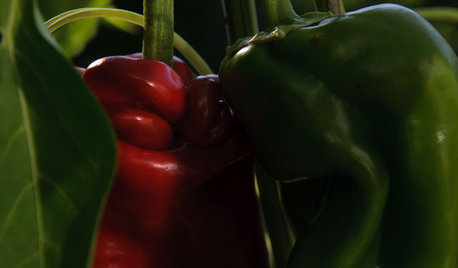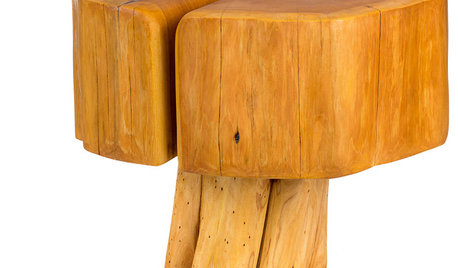Good-bye peppers.
soonergrandmom
10 years ago
Related Stories

WORKING WITH PROSInside Houzz: Bye-Bye, Bland Bachelor Pad
Texas newlyweds blend their styles and celebrate lake views with the help of an interior designer found on Houzz
Full Story
PATIOSPatio Details: Good-bye Cracked Concrete, Hello Lush Garden
A San Francisco couple replace an old parking space with a barefoot-friendly outdoor retreat for eating, entertaining and play
Full Story
WHITERoom of the Day: Bye-Bye, Black Bidet — Hello, Classic Carrara
Neutral-colored materials combine with eclectic accessories to prepare a master bath for resale while adding personal style
Full Story
COLORBye-Bye, Minimalist White — The New Nordic Style Is All About Color
The Scandinavian color palette is moving away from pale, cool shades with hot new hues on walls and floors
Full Story
BEDROOMSBye-Bye, Boring Bed
Looking for the bed of your dreams? Think outside the box spring with these fanciful roosts
Full Story
GARDENING GUIDESSummer Crops: How to Grow Peppers
Some like 'em hot; others like them sweet. With the incredible range of peppers available for home gardens, you can have your pick
Full Story
SHOP HOUZZShop Houzz: Like Salt and Pepper
Cute and kitschy ways to say ‘I love you’ with themed salt and pepper shakers
Full Story
TRADITIONAL ARCHITECTURESaltbox Houses Pleasingly Pepper Landscapes
Refreshingly basic silhouettes and materials make saltboxes a simple architectural pleasure
Full Story
PRODUCT PICKSGuest Picks: Beautiful Things You Can Feel Good About Buying
Upcycled, ecofriendly or just made responsibly, these home accessories and furniture pieces will keep your conscience clear
Full Story
COMMUNITYSimple Acts: The Unsung Power of a Good Neighbor
There are many ways to be a good neighbor, and they're often easier than you think
Full Story





slowpoke_gardener
PerennialK
Related Professionals
Fort Lee Landscape Architects & Landscape Designers · Suffern Landscape Architects & Landscape Designers · Conroe Landscape Contractors · Fairview Landscape Contractors · Fort Atkinson Landscape Contractors · Mission Bend Landscape Contractors · Thornton Landscape Contractors · Irvington Landscape Contractors · Coronado Decks, Patios & Outdoor Enclosures · Castle Rock Decks, Patios & Outdoor Enclosures · Jeffersonville Decks, Patios & Outdoor Enclosures · Pecan Grove Decks, Patios & Outdoor Enclosures · Quincy Decks, Patios & Outdoor Enclosures · Saint Louis Park Decks, Patios & Outdoor Enclosures · Eustis Decks, Patios & Outdoor Enclosureschickencoupe
soonergrandmomOriginal Author
Okiedawn OK Zone 7
chickencoupe
soonergrandmomOriginal Author
Okiedawn OK Zone 7
chickencoupe
chickencoupe
Okiedawn OK Zone 7
Macmex
chickencoupe
soonergrandmomOriginal Author
chickencoupe
chickencoupe